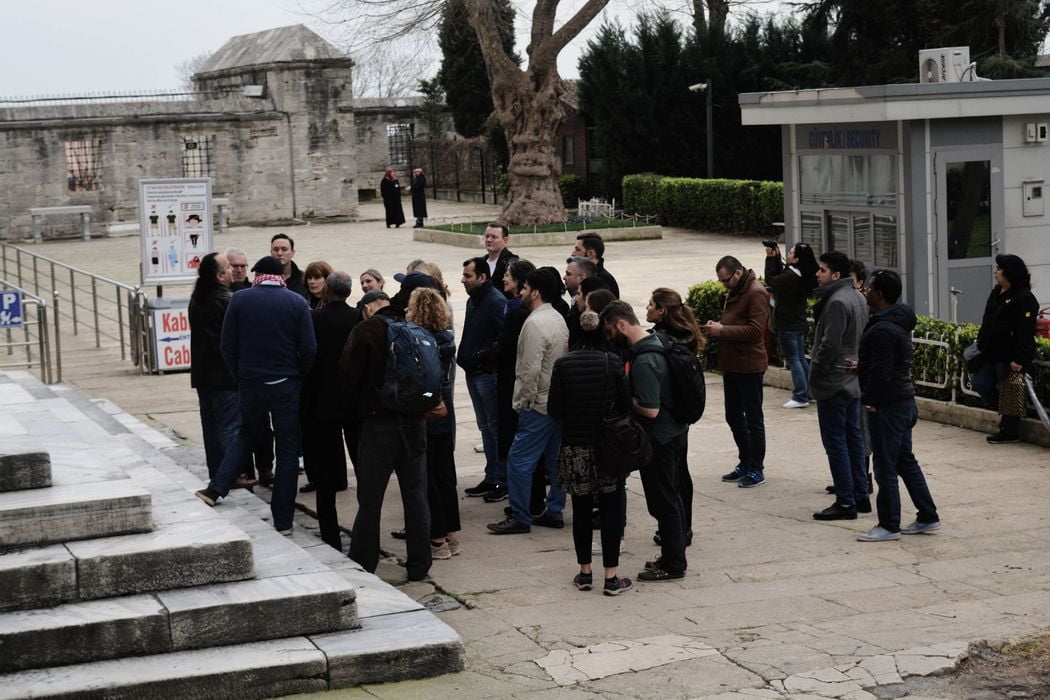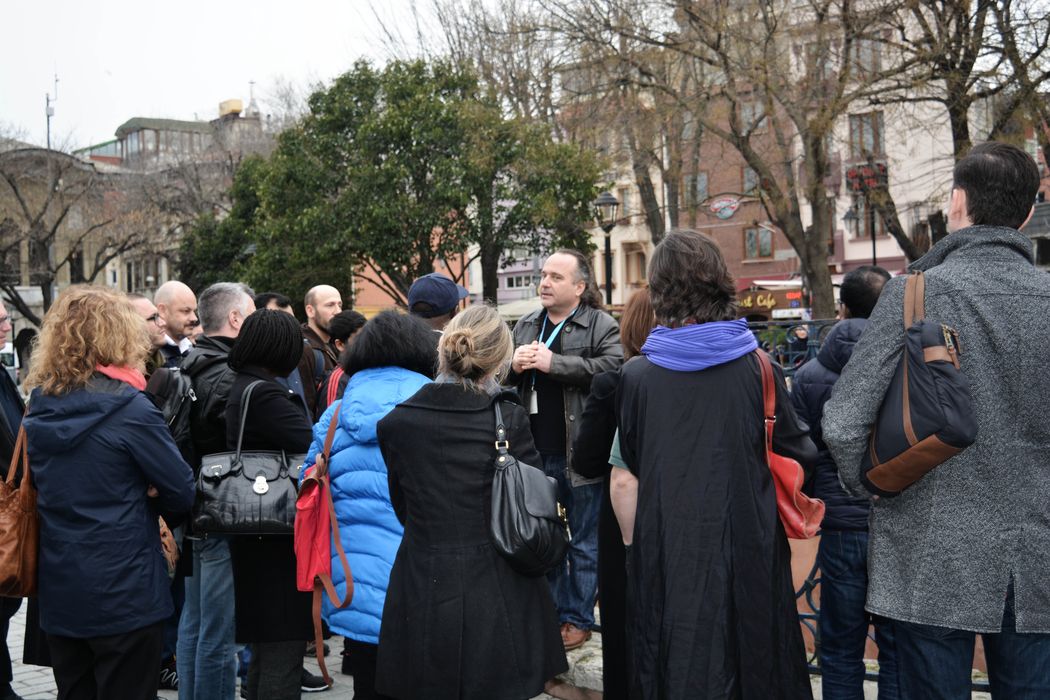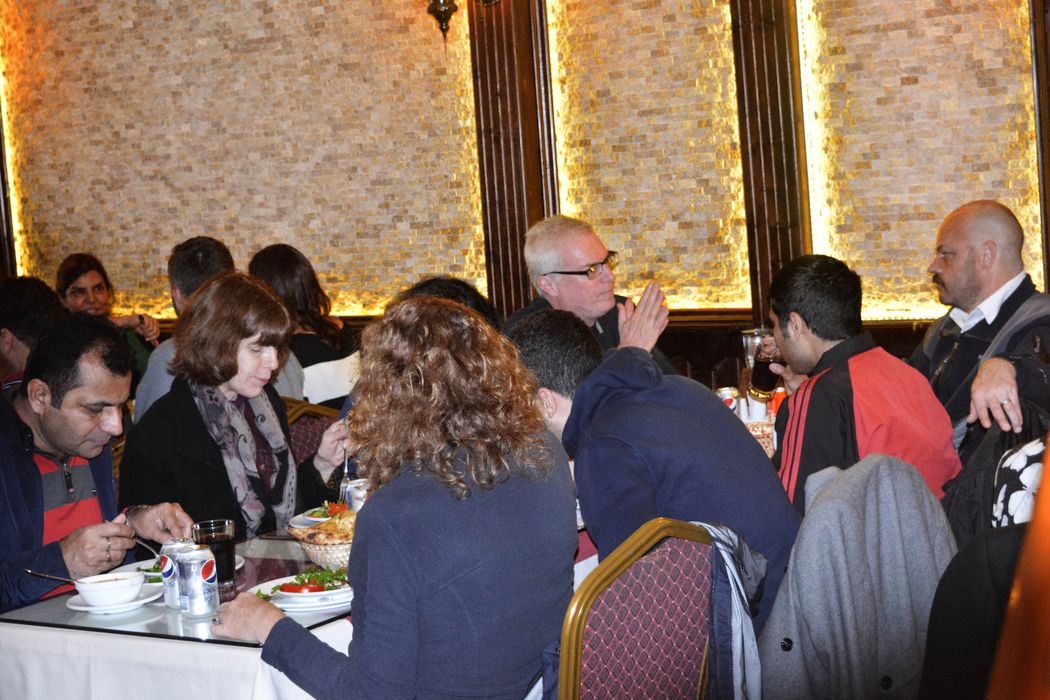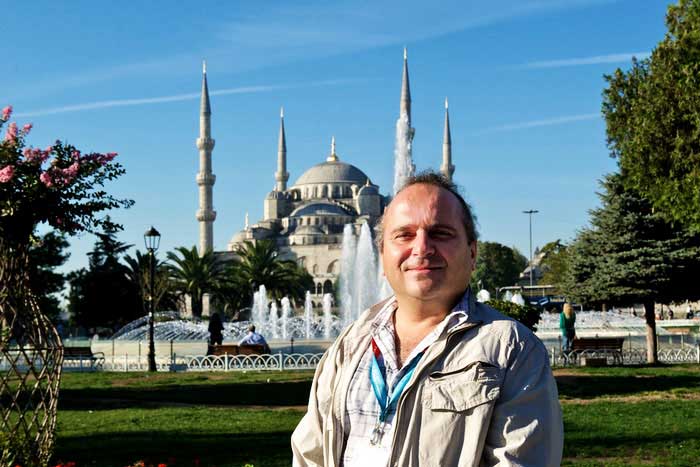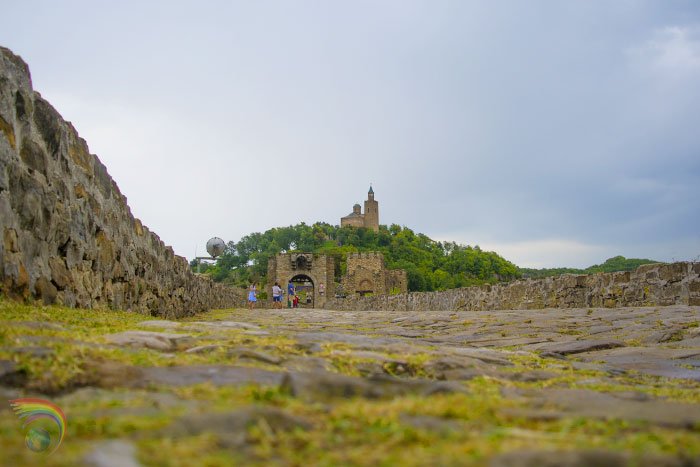Ibn Battuta describes Constantinople.
The city is enormous in size, and in two parts separated by a great river [the Golden Horn], in which there is a rising and ebbing tide. In former times there was a stone bridge over it, but it fell into ruins and the crossing is now made in boats. The part of the city on the eastern bank of the river is called Istambul, and contains the residence of the Emperor, the nobles and the rest of the population.
Its bazaars and streets are spacious and paved with flagstones; each bazaar has gates which are closed upon it at night, and the majority of the artisans and sellers in them are women. The city lies at the foot of a hill which projects about nine miles into the sea, its breadth being the same or greater. On the top of the hill there is a small citadel and the Emperor’s palace. Round this hill runs the city-wall, which is very strong and cannot be taken by assault from the sea front. Within its circuit there are about thirteen inhabited villages. The principal church is in the midst of this part of the city.
The second part, on the western bank of the river, is called Galata, and is reserved to the Frankish Christians who dwell there. They are of different kinds, including Genoese, Venetians, Romans [other Italians?] and people of France; they are subject to the authority of the king of Constantinople, who sets over them one of their own number of whom they approve, and him they call the Comes [count].
They are bound to pay a tax every year to the king of Constantinople, but often they revolt against him and he makes war on them until the Pope makes peace between them. They are all men of commerce and their harbour is one of the largest in the world; I saw there about a hundred galleys and other large ships, and the small ships were too many to be counted. The bazaars in this part of the town are good but filthy, and a small and very dirty river runs through them. Their churches too are filthy and mean.
Hagia Sophia
Of the great church I can only describe the exterior, for I did not see its interior. It is called by them Aya Sufiya [Hagia Sophia], and the story goes that it was built by Asaph, the son of Berechiah, who was Solomon’s cousin. It is one of the greatest churches of the Greeks, and is encircled by a wall so that it looks as if it were a town.
Read More about The Lay of the Two Lovers part 1

